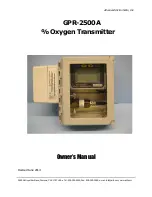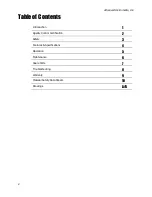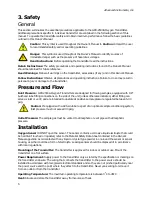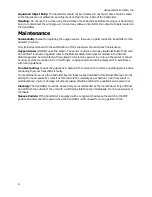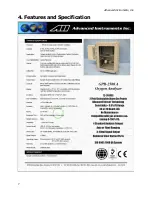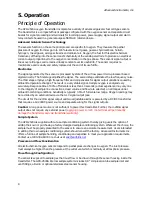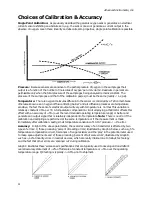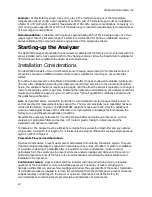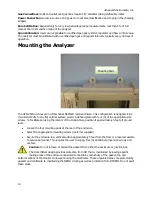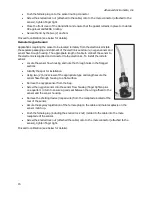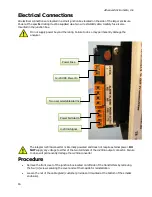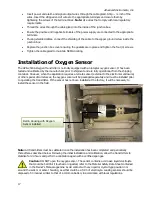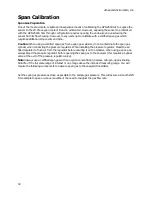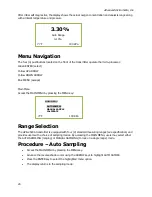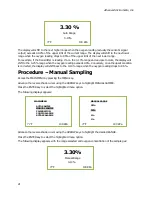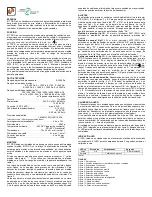
Advanced Instruments, Inc.
Liquid and Object Entry: The transmitter should not be immersed in any liquid. Care should be taken
so that liquids are not spilled into and objects do not fall into the inside of the transmitter.
Handling: Do not use force when using the switches or terminal blocks. Before moving your transmitter,
be sure to disconnect the wiring/power cord and any cables connected to the output terminals located on
the transmitter.
Maintenance
Serviceability: Except for replacing the oxygen sensor, there are no parts inside the transmitter for the
operator to service.
Only trained personnel with the authorization of their supervisor should conduct maintenance.
Oxygen Sensor: DO NOT open the sensor. The sensor contains a corrosive liquid electrolyte that could
be harmful if touched or ingested, refer to the Material Safety Data Sheet contained in the Owner’s
Manual appendix. Avoid contact with any liquid or crystal type powder in or around the sensor or sensor
housing, as either could be a form of electrolyte. Leaking sensors should be disposed of in accordance
with local regulations.
Troubleshooting: Consult the guidelines in Section 8 for advice on the common operating errors before
concluding that your transmitter is faulty.
Do not attempt to service the transmitter beyond those means described in this Owner’s Manual. Do not
attempt to make repairs by yourself as this will void the warranty as per Section 10 and may result in
electrical shock, injury or damage. All other servicing should be referred to qualified service personnel.
Cleaning: The transmitter should be cleaned only as recommended by the manufacturer. Wipe off dust
and dirt from the outside of the unit with a soft damp cloth then dry immediately. Do not use solvents or
chemicals.
Nonuse Periods: If the transmitter is equipped with a range switch advance the switch to the OFF
position and disconnect the power when the transmitter is left unused for a long period of time.
6


